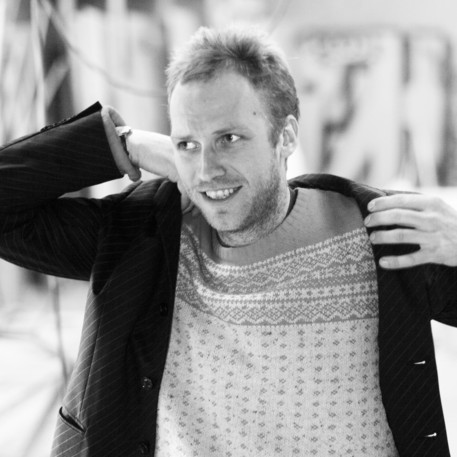The Work is not only about Aesthetics and Design but also about Values and Needs
My first encounter with Design School Kolding was around 2000 when I attended the Open House and was deeply fascinated by the aura of creativity that emanated from the school. I wanted to be part of that. But my road to that goal was not perfectly straight. First I attended courses at the School of Fine Arts, at School of Art and Design, Aarhus and took a Foundation Course at London College of Fashion; I also sat for the admission examination a second time before it was my turn to be admitted to Design School Kolding. The reason I chose textiles was primarily because of the freedom provided by the fact that I had not already acquired skills in that subject. Most of the material was new for me, which meant I could adopt a playful and very curious approach to the topic. Being able to work with textiles in so many different ways offered an enormous freedom.
During my studies I specialised mostly in print and interior design, and during the Master’s programme I concentrated on projects about healing architecture adopting decoration in that context. As a student I was fascinated by the overlooked space – a space that has an important function but lacks sensory impressions and human values. I was inspired by the people who had to use the space, the function of the space and how surroundings impact users. A view of nature and references to nature play an important part in healing architecture – that’s where I found my inspiration, and I concentrated on creating depth and changeability in my designs by working with light and shade in the textile expression. I was one of the first students who focused on the hospital in my textile experiments, and I spent several days observing and interviewing patients in order to understand their needs, challenges and the context in which I was going to create my designs. The result was three projects: A textile decoration of a patient’s room, a decoration of the hospital chapel and of a waiting room, where it was the function of the room and the users’ needs that dictated the development of my design.
After my graduation in 2009 my work with healing architecture and the hospital as a target group led to a job as an innovation consultant at Invia, Region Southern Denmark – today Syddansk Sundhedsinnovation – at the time a rather atypical job for a textile designer. When I started working at the municipal building there was no one else with my background. The work within the Region alternated between projects where I continued to be the practicing textile designer, for example at the children’s ward at Kolding Hospital, to projects about service design and facilitating and communicating design methods.
The reason I chose to work within this niche – and still do it – is that I can make a difference with my design; it is not only about aesthetics and design but also about underlying values and needs. The purpose is to create relationships, to understand other professional groups, identify their challenges and together with them develop solutions that provide value for them in their daily lives. This is true, whether it is the decoration of an entire children’s ward, working to create a feeling of security for children who are going through an MRI scanner, or developing a prototype for a folder containing information about moving for elderly citizens and their relatives, or project management and development of decision support tools for cancer patients. In all areas I use different segments of my design education, which makes my work extremely versatile.
Since July 2016 I have been employed as a senior designer at LAB for Social Inclusion at Design School Kolding. Here design and aesthetics are a priority, but first and foremost it has to be meaningful and valuable for the users we involve in the projects. When we succeed we are fully aware that design and design methods can make a difference.




